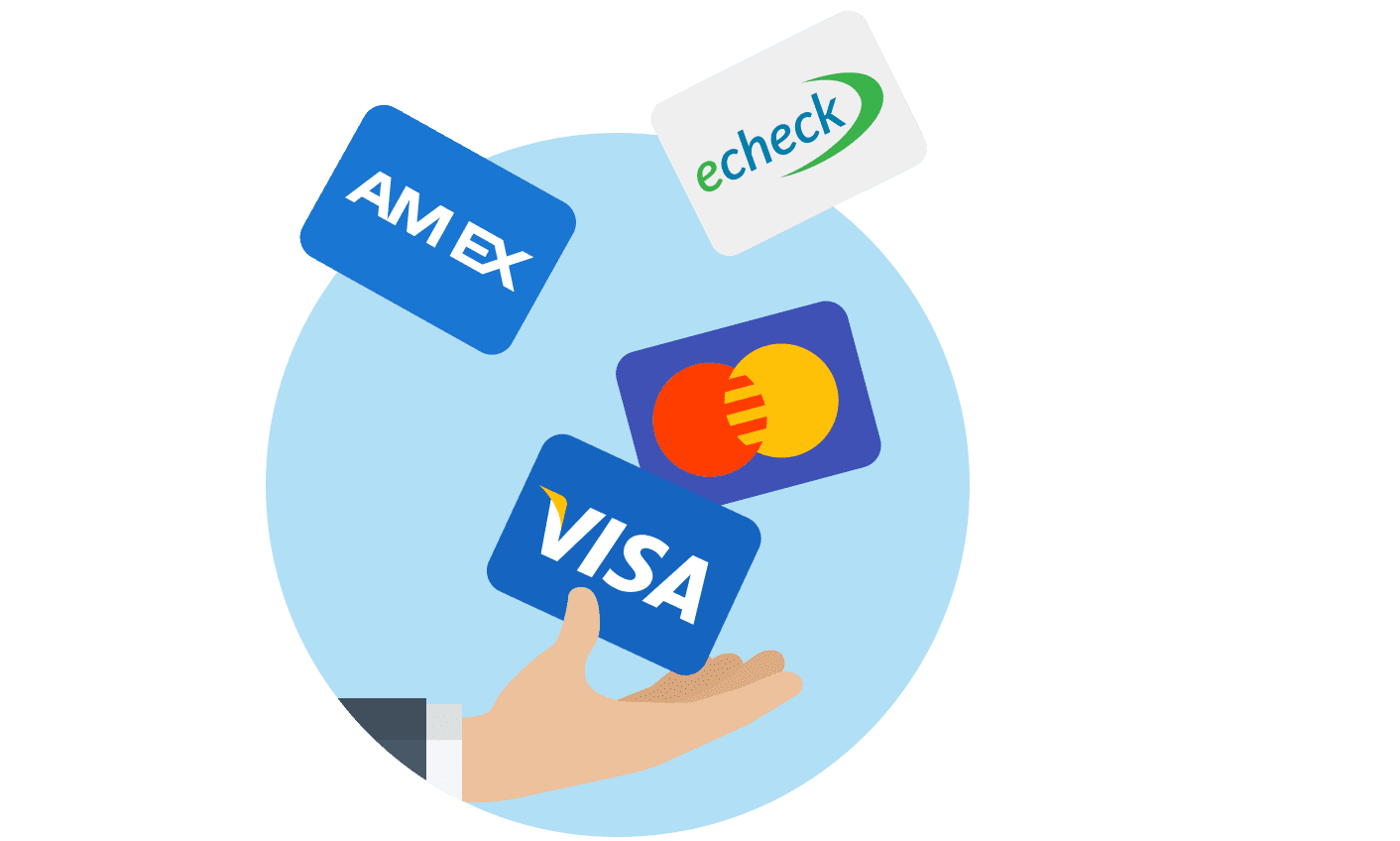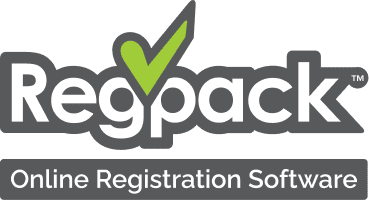The digital payments market is an increasingly growing one. It reached $5.44 trillion in 2020.
As the market changes and more revolutionary solutions to payment processing cause faster payments, there is no doubt that you should take advantage of it.
Numerous benefits come with digitizing your payment processes, but we first need to define how they differ from classic ones, and what are your options.
After we cover the basics, it will be easier to grasp which features to look for in a good payment processing system.
If you want to get paid faster and improve your businesses’ cash flow, keep reading.
Table of contents:
Defining B2B e-Payments
What Makes B2B Payments Special?
Main B2B E-Payment Methods
How Does an Electronic B2B Payment Processing Work?
Benefits of Using a B2B Electronic Payment Solution
What to Look for in a B2B Electronic Payment Platform?
Defining B2B e-Payments
B2B e-payments involve electronic transactions between two businesses for exchanged products or services.
They don’t include traditional payment methods such as cash or paper checks. Instead, the buyer gets a digital invoice with an agreed due date for payment.
Payment methods are usually agreed upon between the involved companies but mostly involve wire transfers or card payments.
What Makes B2B Payments Special?
One major difference from B2C payments is that for B2B payments, there needs to be internal processing. In comparison, B2C payments are often made upfront, and authorization happens instantly.
Also, buying and selling between businesses is often a complex process, and higher sums can burden the transactional process.
Here are some factors that additionally impact B2B transactions:
- Quantity – amounts of money exchanged between two businesses are higher than between businesses and consumers.
- Frequency – contracts can bind buyers into more regular transactions.
- Industry – every industry has its own payment needs, depending on the type of product and volume.
- Parties involved – in B2B transactions sometimes entire teams are dedicated to the billing process.
- Payment delay – B2B payment cycles are longer, usually between 30 and 90 days, which can cause delays in revenue.
Although it is sometimes hard to innovate in the B2B payment market due to various safety concerns and regulations, many problems are slowly being solved with digital payment options.
Main B2B E-Payment Methods
The most common B2B payments are eChecks, credit cards, ACH, and wire transfers. Each has its pros and cons, so compare them to find the best method for your business.
eChecks
Checks come in physical and electronic forms, but since mailing paper checks to banks is inefficient, many banks today offer eChecks or processing of checks through mobile apps for faster cash depositing.
eChecks are more widely accepted in the U.S. as a payment method than in other parts of the world, primarily due to the traditional business practice.
Even though there are alternatives to using checks, and fintech companies offer new banking solutions, eChecks will likely stay a viable payment option for the foreseeable future.
Credit Cards
Credit cards allow businesses to receive full upfront payments and are one of the most convenient and quickest payment methods.
One major drawback of this payment method is that banks have hefty fees on transfers which can grow tremendously in B2B transactions. A mere 3-4% of each transaction can turn into thousands of dollars in bank fees for one business.
Another thing to consider when using credit cards is that they’re susceptible to fraud. Despite that, they are one of the most widely accepted payment methods.
Electronic Funds Transfer (EFT)
Electronic funds transfers move money at a lower cost than other payment methods. This is a faster and automated process many businesses prefer because there is a lower risk of errors.
EFTs are often used as an umbrella term that covers:
- ACH
- Wire transfers
- Direct deposits
- Virtual cards
- Personal computer banking, etc.
Here, customers use computer networks and essentially do their own banking. They send and receive payment on time, which enables a seamless flow of business transactions. Both buyers and sellers can avoid necessary follow-up to their banks since the process is digital.
The only requirement for EFT payments is that the involved parties have an active bank account.
EFTs are easy and fast payment processing methods, so many businesses adopt them into their transactional processes. We’ll cover some sub-types of EFT payments in the following sections.
Bank Transfers (ACH and Wire Transfer)
Wire transfers and Automated Clearing House (ACH) payments both transfer funds through bank accounts but have some differences.
First, ACH is a US-only system, while wire transfers are applicable worldwide.
It seems that ACH payments are increasingly favored in the US, as their use is on the rise. In February 2021, there were almost 118 million daily ACH payments, with an increase of 19% from the previous year.
Wire transfers are commonly used in international businesses, but the volume of those transactions in the US is also still significant.

Both ACH and wire transfers process one transaction at a time. Wire transfers are processed instantly, meaning the money leaves your account at once, but it takes some time for the payee to receive those funds.
One drawback with these types of payments is that they’re costly because banks take a fee for payment processing. Also, these methods are primary targets for stealing bank account information.
Payment Gateways
A payment gateway is an online payment platform that you integrate with your product to authorize online payments. Popular examples include PayPal and Stripe.
Gateways have integrated security processes not to allow a direct transfer of information between a website and a payment processor.
The payment gateway needs to make a connection between the payment platform and its payment processing system. Once the transfer has been authorized, funds are deposited in the seller’s online account through the payment gateway.
One great benefit to payment gateways is that they allow multiple payment options and can be accepted in any location. They are easy to use and convenient for any type of business to receive and process payments.
How Does an Electronic B2B Payment Processing Work?
Payment processing providers mimic a typical B2C transaction in their electronic B2B payments—one that’s easy to implement and use.
With every transaction, the first step is to capture the transaction request. Then the payment information is encrypted, and the request is sent to an acquiring bank.
The acquiring bank is linked to the buyer’s account, and they need to authorize the transaction. They send the request to an issuing bank which has to inquire whether the buyer has enough funds. An immediate response is sent back to the acquiring bank.
Their next step is to send request information to the payment gateway. Finally, the payment gateway processes the request and sends a confirmation (or rejection) of purchase to the buyer and the seller.
Electronic payment processing is fairly simple, and transactions are made easy for sellers and buyers as systems get more advanced.
Payment processors can be easily integrated into any payment platform, such as eCommerce or SaaS solutions. When you’re looking for B2B payment software, this is an important feature you should consider.
Regpack, for example, integrates with BlueSnap for seamless payment processing, so you can accept payments, manage your transactions and users all under one platform. It’s perfect for businesses wanting more than just mere payment processing.

Overall, the right software should track and accept every payment type, from credit cards, eChecks, ACH to wire transfers. It should also support multiple currencies for customer’s convenience.
Electronic B2B payment processes are continually offering customers more ways for their financial transactions.
Benefits of Using a B2B Electronic Payment Solution
To make a better case for digital payments in the B2B industry, we will go over some known benefits for companies that have adopted them.
Improved Cash Flow
Many businesses suffer from cash flow problems, whether those problems stem from lack of business opportunities, external influences such as the Covid pandemic, or something else.
However, when you simplify your payment process, you pave the way for more revenue.
A billing software stores essential data related to all your transactions, and that information can be priceless if you want to improve your cash flow.
First, you’d be able to identify patterns. For example, you can see which customers have more problems with paying on time. Then, you can work on resolving the issue—enforcing stricter deadlines or working on replacing those customers with better ones.
Also, when you automate your process and move to digital platforms, you’ll receive money faster. This can ensure better cash flow and financial stability.
Simplicity and Convenience
Use B2B payment solutions to simplify your payment process.
With automated payment solutions, the checkout process is faster and more convenient for your clients. Integrating an electronic B2B payment system simplifies your business transactions and improves clients’ experience.
Additionally, the software automatically saves data that can be used for accounting purposes, so accounting also becomes more streamlined. Not to mention that you will reduce the number of errors in recording accounts receivable and accounts payable.
Less Time and Resources Spent
Maintaining unoptimized payment processes can become time-consuming and complex. Once you simplify this by integrating an automated solution, you or your team can spend more time on other activities, such as perfecting your product and services.
You’re also saving by not employing additional human resources that will process credit applications, manage billing, send dunning emails manually, etc.
An automated digital system that can do all of that and save you time on manual work. Plus, by preventing likely human errors, it lowers the overall cost of doing business.
So, automate your repetitive work associated with payment processing to save time and resources for other business operations.
More Options = More Payments
The more payment options you give your customers, the more money can flow in. It’s been proven that the more payment options you offer, the more annual revenue you get, and we wrote about it in our other article.
Modern billing tools support different payment methods which provide convenience and freedom of choice to your clients.
Let customers choose whether they want to pay with a debit or credit card, eCheck or with ACH, and in which currency. You should give them the flexibility to pay however they like.

Multiple options can reduce friction in the payment process and increase the number of complete purchases. All in all, flexible payment methods increase customer satisfaction and guarantee more purchases.
Better Customer Convenience
You should switch to the digital sphere to handle your payment processes because that’s where your customers are. In April 2021, nearly 78% of customers report they purchased a product online in the last month.
The more convenient payments are to your clients, the more you ensure that they stay loyal, repeat customers. Payment convenience doesn’t have to stop at offering cash or credit card payment. You can also add other amenities such as payment plans.
You can implement customized offers through the pay later option to spread out their payment obligations. That way, you ensure you get the money but make it easier for the customer to pay what they’re due.
You’re automatically collecting money, and your customer doesn’t have to shell out large amounts upfront. Thus, you’re ensuring they stay doing business with you for a longer time because they won’t be straining their budgets or be out of funds quickly.
Electronic payments are convenient for customers to purchase goods and services at their leisure and within their means.
More Security
B2B payment solutions have increased security protocols, and they are definitely easier to track than cash.
Digital solutions aren’t immune to data breaches and fraud, but if companies comply with standard regulations and safety protocols, there is no need to panic.
Payment solution providers are increasingly hiring experts and engineers to improve their processes so stored information is safe.
There are multiple ways payment solutions can offer you more security, like tokenization, SSL, and encryption. In that way, you’re protecting your customer’s credit card data and don’t have to worry about data breaches.
Here’s how Regpack ensures secure protocols:
Regpack is PCI compliant level 2 and has passed all audits, since 2010, on the first scan. Our entire system is scanned on a weekly basis through a PCI checking mechanism. In addition, there is a monthly scan done by the PCI compliance approval entity.
Apart from system security, having a digital payment solution allows you to follow the payment trail, which is useful in cases of fraudulent purchases, etc.
Protect your customers with reliable payment systems that continually improve their safety features.
Enhanced Visibility and Reporting
Payment solutions keep your financial data in one place, offering you greater visibility into your finances.
Your payment solution records each transaction, so you have a lot of reliable financial data on your hands. This can help you determine the financial health of the entire organization.
Furthermore, you can easily detect excessive expenses, suspicious costs and analyze rebates earned.
Digital payments also allow you to show your clients the exact price of each transaction, so there’s no misunderstanding in the payment process.
If you use electronic payment systems, you will record your transactions automatically, so you have a clear understanding of your company’s financial health.
24/7 Availability
Digital payment solutions are always working. Unlike with traditional payment processes, you don’t depend on the bank’s working hours to receive the money you’re owed. Payment solutions are always available and serve customers at their convenience.
Does someone like to make a purchase at 9 PM on Sunday? If you offer online payments, they can.
And should there be any disputes about payments, both parties can efficiently access the necessary data at any time.
The around-the-clock availability also enables companies to have more efficient financial operations, which is especially important if you are working with international customers in different time zones.
Operating hours are not an issue with electronic payment solutions.
What to Look for in a B2B Electronic Payment Platform?
Choose a reliable payment processing vendor that offers the features required for peace of mind when it comes to financial transactions. To better manage your sales and payment process, you can use the solution for B2B from Phonexa offered especially for this sector.
Do the necessary research when you’re shopping for a payment system. Handling billing can become frustrating and complex if you don’t have a system that works well for your company.
Here are some essential things you need to look for in a B2B payment processing system:
- Integrations – your system should efficiently work with your accounting tools, payment processors, and banks.
- Practicality – consider the versatility of your customer base and how they make payments. Your B2B e-payment system should allow for the most commonly used payment methods.
- Simplicity – the tool should be easy to set up, use, and maintain for the longest time. Quality support is also essential, especially in the initial period.
- Reporting – because it saves a lot of data related to financial transactions, the payment system should also be able to provide accurate analytics at any time and generate custom reports. Check this video to see which common reports Regpack offers.
- Reputation – rely on case studies and reviews when you’re looking for a payment system. See if real users mention the features that are important to your business.
Consider Regpack’s online payment software with all the essential features that allow you to accept multiple payment options fast.
Additional features include customizable payment forms and accepting payments from any device. Regpack’s system is designed to help you and your customers have seamless payment processing so you can focus on other essential things.
A good B2B payment system should make financial transactions faster and easy.
Conclusion
B2B companies deal with more money and different payment processes than B2C companies. Luckily, there are ways to ease this burden if you opt for an excellent electronic payment system.
You can improve your cash flow, spend less time and resources on manual payment processing, but most importantly, you can increase your customer satisfaction and ensure more purchases.
That can only happen if you take the due diligence in looking for the right features in your payment processing software.
Invest in an electronic payment system and improve your business operations!


















